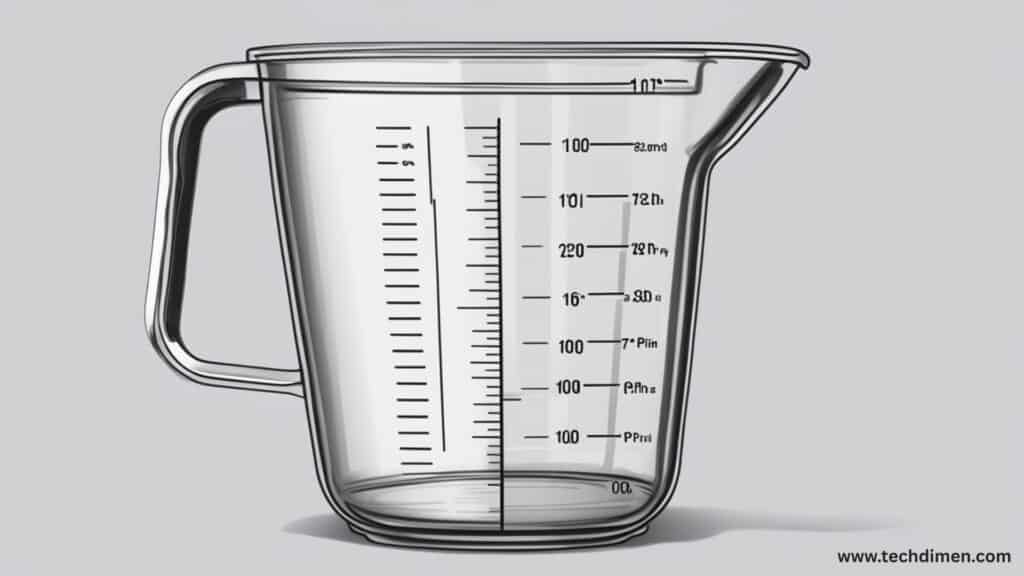Whether you’re baking a cake, measuring a health supplement, or filling a water bottle, converting liquid units accurately can make or break the outcome. One common volume that often shows up is 275 milliliters. But how much is that in ounces? Let’s dive into the precise conversion and explore why knowing how to convert 275 ml to oz can be incredibly useful across daily tasks.
What Does 275 ml Equal in Ounces?

To convert milliliters to US fluid ounces, the standard factor is 1 ml = 0.033814 oz. That means:
275 ml × 0.033814 = 9.296 oz
Rounded off, 275milliliters is approximately 9.30 fluid ounces. This measurement is based on the US customary fluid ounce, which differs slightly from the UK (imperial) version.
If you’re working with UK fluid ounces, the conversion is a bit different:
1 ml = 0.0351951 imperial oz, so:
275 ml × 0.0351951 = 9.678 oz (UK)
Knowing which system you’re using is important because the final measurement can vary depending on location or context especially in recipes or prescriptions.
When you’re working in the kitchen, following a recipe, or reading a nutrition label, you might run into measurements like 275 ml. If you’re used to ounces especially in the US or UK you’ll want to know what that means.
Quick Answer: 275 ml to Ounces
- 275 milliliters (ml) is equal to approximately 9.30 US fluid ounces.
- In UK (Imperial) fluid ounces, 275 ml is about 9.68 fl oz.
275 ml = 9.30 US fl oz
275 ml = 9.68 UK fl oz
the Conversion Formula
To convert milliliters to fluid ounces, use these formulas:
- US Fluid Ounces:
milliliters × 0.033814 = ounces
→275 × 0.033814 = 9.29885 (rounded to 9.30 oz) - UK (Imperial) Fluid Ounces:
milliliters × 0.035195 = ounces
→275 × 0.035195 = 9.67813 (rounded to 9.68 oz)
US vs UK Fluid Ounces – Why the Difference?
Here’s a fun fact: not all ounces are created equal.
- The US fluid ounce is based on the US gallon (128 fl oz = 1 gallon).
- The UK fluid ounce (also called Imperial) is based on the UK gallon (160 fl oz = 1 gallon).
So even though both systems use “ounces,” they don’t measure the same amount of liquid.
Conversion Table: Milliliters to Ounces
| Milliliters (ml) | US Fluid Ounces | UK Fluid Ounces |
|---|---|---|
| 100 ml | 3.38 oz | 3.52 oz |
| 200 ml | 6.76 oz | 7.04 oz |
| 275 ml | 9.30 oz | 9.68 oz |
| 300 ml | 10.14 oz | 10.56 oz |
| 500 ml | 16.91 oz | 17.60 oz |
Real-World Example: What Does 275 ml Look Like?

Still trying to picture it? Here’s a relatable way to visualize it:
- A standard soda can in the US is 355 ml, so 275 ml is a little less than a can of soda.
- It’s about 1.16 cups in US measurement.
So if a recipe asks for 275 ml of milk or broth, you’d use just over 1 cup.
Common Items That Hold Around 275 ml
- Travel-sized shampoo bottles
- Sports drink bottles (some small sizes)
- Individual juice bottles
- Medium-sized coffee mugs
These examples can help you estimate how much liquid you’re dealing with, especially if you don’t have a measuring cup on hand.
Why This Conversion Matters
Whether you’re baking cookies or mixing a drink, using the right amount of liquid is crucial. A few extra ounces might not seem like a big deal but in recipes or medications, it can make all the difference.
Wrap-Up: Milliliters to Ounces Doesn’t Have to Be Confusing
Here’s a quick recap:
- 275 ml = 9.30 US fl oz
- 275 ml = 9.68 UK fl oz
- Always check which ounce system your recipe or label uses
Knowing this conversion helps you measure liquids more accurately no matter which side of the ocean you’re on.
Why Does This Conversion Matter?

Conversions might seem like trivial math, but in practice, they affect outcomes. Imagine using too much or too little of an ingredient in a recipe, or mismeasuring medication. Accuracy can impact taste, safety, and effectiveness.
In the Kitchen
If a European or Asian recipe calls for 275 ml of broth or milk, and you’re used to ounces, understanding that it’s just over 9 ounces saves guesswork. Precision in cooking affects flavor, texture, and the balance of your dish.
For Drinks and Beverages
Many drink bottles list volume in milliliters. If you’re used to ounces and want to know how much liquid you’re consuming, recognizing that 275 ml equals about 9.3 oz can help you track hydration or calories more effectively. It’s also a common size for craft soda bottles and small juice servings.
In Healthcare and Medicine
Dosing liquid medications often requires converting ml to oz or vice versa. A 275 ml bottle of medication would provide roughly 9.3 oz of fluid, a helpful comparison if you’re more comfortable with imperial units.
In Fitness and Nutrition
If you’re portioning out smoothies, protein shakes, or pre-measured drinks, converting 275 ml to 9.3 oz helps you stick to nutritional plans. Labels often list ml, while your shaker or measuring cup may use ounces.
Quick Comparison Table
To give some context, here’s how 275 ml compares to other common measurements:
| Volume (ml) | Fluid Ounces (US) |
|---|---|
| 100 ml | 3.38 oz |
| 250 ml | 8.45 oz |
| 275 ml | 9.30 oz |
| 300 ml | 10.14 oz |
| 500 ml | 16.91 oz |
As you can see, 275 ml sits nicely between a cup and a half-cup mark, making it a common measure in recipes and pre-packaged goods.
How to Convert Without a Calculator

While a calculator or app is handy, you can estimate conversions mentally using this trick:
Since 1 oz is roughly 30 ml, you can divide 275 by 30 to get an estimate.
275 ÷ 30 ≈ 9.17 oz
This isn’t exact, but it’s close enough for quick mental math, especially in casual situations like adjusting drink servings or modifying a recipe on the fly.
If you don’t have a calculator handy, don’t worry. You can still get a fairly accurate result using quick estimation methods.
1. Remember the Magic Number: 30
A useful trick:
1 US fluid ounce ≈ 30 ml (technically it’s 29.5735, but 30 is easier to work with).
2. Divide Milliliters by 30
To estimate ounces:
275 ml ÷ 30 = ~9.17 ounces
That gets you pretty close to the actual conversion (which is 9.30 US fl oz). It’s not perfect, but it’s close enough for everyday cooking or drink measurements.
3. Or Use the Rule of Thumb
If math’s not your thing, here’s an even easier trick:
- 250 ml ≈ 8.5 oz
- Add 25 ml ≈ 0.8 oz
- Total: 275 ml ≈ 9.3 oz
This layered estimate gives you nearly the exact answer without complicated math.
Bonus Tip: Use Your Hand or Kitchen Items
- A standard US cup = 240 ml → 275 ml is just a little more than 1 cup
- A tablespoon = 15 ml → 275 ml = about 18 tablespoons
So if you’re in the kitchen, just use a 1-cup measure and add a couple extra tablespoons.
Using Online Tools for Instant Accuracy
If you need pinpoint accuracy, tools like Google’s unit converter or apps like Unit Converter Pro make it easy. Just type in “275 ml to oz” into a search bar, and you’ll get the answer instantly. Most smartphones also have built-in conversion tools through voice assistants.
How Different Liquids Affect Volume and Weight
It’s important to note that while volume stays constant across substances, weight can change depending on the liquid’s density. For example, 275 ml of water and 275 ml of olive oil both equal 9.3 fluid ounces in volume, but they don’t weigh the same. So when you’re measuring for cooking or mixing chemicals, be aware whether your measurements require weight (grams) or volume (ml/oz)
1. Volume Stays the Same Weight Does Not
Volume is the amount of space something occupies.
Weight (or more precisely, mass) depends on density how tightly packed the particles in a liquid are.
So, 275 ml of water and 275 ml of oil have the same volume, but they don’t weigh the same.
2. Density Is the Key
Each liquid has its own density, which is usually measured in grams per milliliter (g/ml). Here’s a quick comparison:
| Liquid | Approx. Density (g/ml) | Weight of 275 ml (g) |
|---|---|---|
| Water | 1.00 | 275 g |
| Olive Oil | 0.92 | ~253 g |
| Milk | 1.03 | ~283 g |
| Honey | 1.42 | ~391 g |
| Maple Syrup | 1.33 | ~366 g |
| Alcohol (Ethanol) | 0.79 | ~217 g |
Same volume = different weight depending on the liquid’s density.
3. Why This Matters
When cooking, crafting, or doing science experiments, these differences matter:
- Baking: Recipes may require weight for accuracy especially for dense liquids like honey or molasses.
- Health & Nutrition: Liquid medicine or drink calories vary based on density and sugar content.
- Shipping: A box of 275 ml bottles of syrup weighs much more than 275 ml bottles of vodka.
4. Practical Tip: Use a Kitchen Scale for Accuracy
If you’re unsure about weight, grab a digital kitchen scale. Pour the liquid into a container, zero the scale, and check the actual grams. For liquids like honey or oil, that can make a big difference in a recipe’s success.
5. Visual Example: 275 ml in Different Liquids
Imagine you fill three identical cups with 275 ml of:
- Water: Feels light and flows fast
- Maple Syrup: Feels heavy and pours slowly
- Vegetable Oil: Feels light but coats the cup differently
Same size, different behaviors and different weights.
FAQs: 275 ml to Ounces
How many ounces is 275 ml?
A:
275 milliliters is approximately 9.30 US fluid ounces.
Is 275 ml the same as 9 ounces?
A:
Not exactly. 275ml is slightly more than 9 ounces. It equals 9.30 US fluid ounces, so if you’re measuring for cooking, use just a little more than 9 oz.
What is 275 ml in UK fluid ounces?
A:
275 ml is about 9.68 UK fluid ounces. The UK uses a different ounce size (1 UK fl oz = 28.41 ml) compared to the US (1 US fl oz = 29.57 ml).
How can I convert 275 ml to oz manually?
A:
Use this simple formula:
275 ÷ 29.5735 = 9.30 US fl oz
Or for quick estimation:
Divide by 30 → 275 ÷ 30 = ~9.17 (close enough for most practical uses).
Is 275 ml more than a cup?
A:
Yes. A US measuring cup is 240 ml, so 275ml is roughly 1.16 cups.
How many tablespoons are in 275 ml?
A:
There are approximately 18.6 US tablespoons in 275 ml.
(1 tablespoon = 14.79 ml)
Can I use 275 ml and 9 oz interchangeably in recipes?
A:
Most of the time, yes especially for non-baking recipes. But for precise baking or chemistry, it’s best to use the exact conversion: 9.3 oz.
Does the type of liquid affect the oz conversion?
A:
No, volume in ounces is the same regardless of the liquid. But weight (in grams or pounds) will change depending on the liquid’s density.
How much is 275 ml in cups and spoons?
A:
- 1.16 US cups
- 18.6 tablespoons (US)
- 55.2 teaspoons (US)
Is there a difference between fluid ounces and ounces by weight?
A:
Yes.
- Fluid ounces measure volume
- Ounces (by weight) measure mass
So 275ml = 9.3 fluid ounces, not ounces in weight.
Final Thoughts
Converting 275 ml to oz gives you a practical benchmark: it equals about 9.30 US fluid ounces or 9.68 UK fluid ounces. Knowing how to convert between these units helps you handle recipes more accurately, measure medication safely, and keep track of your beverage intake with confidence.
Whether you’re in the kitchen, at the gym, or organizing health routines, the ability to convert between milliliters and ounces ensures you’re always one step ahead when precision counts.

Jhon AJS is a tech enthusiast and author at Tech Dimen, where he explores the latest trends in technology and TV dimensions. With a passion for simplifying complex topics, Jhon aims to make tech accessible and engaging for readers of all levels.







